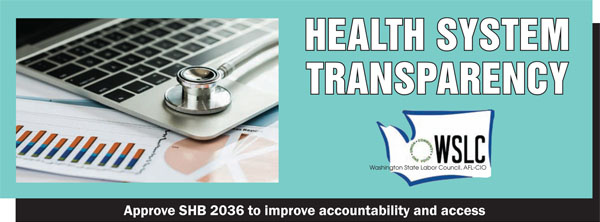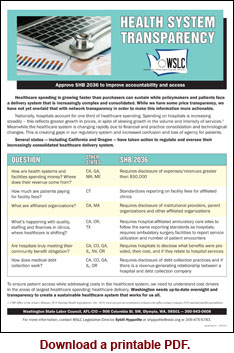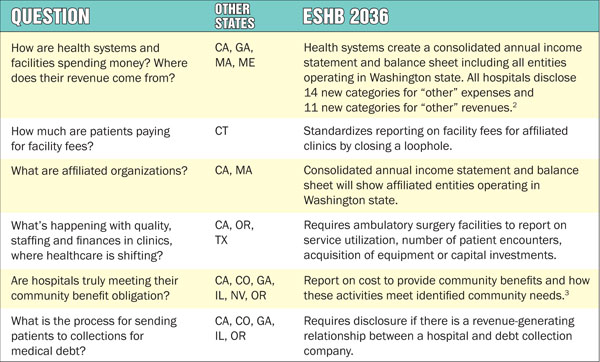STATE GOVERNMENT
We need healthcare transparency, oversight
ESHB 2036 would shed light on what is driving skyrocketing hospital costs
OLYMPIA (Feb. 18, 2020) — Hospital costs are rising across the nation — inpatient care prices grew 42% from 2007 to 2014, according to one study — and are considered the main driver of escalating healthcare costs. Yet we know precious little about why this is happening, making it difficult not only for people to get access to health care, but also for legislators trying to address this growing crisis.
SHB 2036, sponsored by Rep. Nicole Macri (D-Seattle) and strongly supported by the Washington State Labor Council, AFL-CIO, would help us understand what is driving the escalating costs of health care in our communities by creating some transparency and oversight of health systems. On Sunday, it passed the House of Representatives, 56-42, and it now heads to the Senate for consideration.

The following is from the Washington State Labor Council, AFL-CIO:
 Healthcare spending is growing faster than purchasers can sustain while policymakers and patients face a delivery system that is increasingly complex and consolidated. While we have some price transparency, we have not yet overlaid that with network transparency in order to make this information more actionable.
Healthcare spending is growing faster than purchasers can sustain while policymakers and patients face a delivery system that is increasingly complex and consolidated. While we have some price transparency, we have not yet overlaid that with network transparency in order to make this information more actionable.
Nationally, hospitals account for one third of healthcare spending. Spending on hospitals is increasing steadily – this reflects greater growth in prices, in spite of slowing growth in the volume and intensity of services. Meanwhile the healthcare system is changing rapidly due to financial and practice consolidation and technological changes. This is creating gaps in our regulatory system and increased confusion and loss of agency for patients.
Several states — including California and Oregon — have taken action to regulate and oversee their increasingly consolidated healthcare delivery system.

1. CMS Office of the Actuary Releases 2018 National Health Expenditures, Dec. 2019. cms.gov/newsroom/press-releases/cms-office-actuary-releases-2018-national-health-expenditures
2. Most hospitals disclose remaining uncategorized “other” expenses/revenues over $1 million. (Sole community and critical access hospitals exempted.)
3. Sole community and critical access hospitals report on 10 activities, compared to 20 activities for other hospitals.
To ensure patient access while addressing costs in the healthcare system, we need to understand cost drivers in the areas of largest healthcare spending: healthcare delivery. Washington needs up-to-date oversight and transparency to create a sustainable healthcare system that works for us all.





